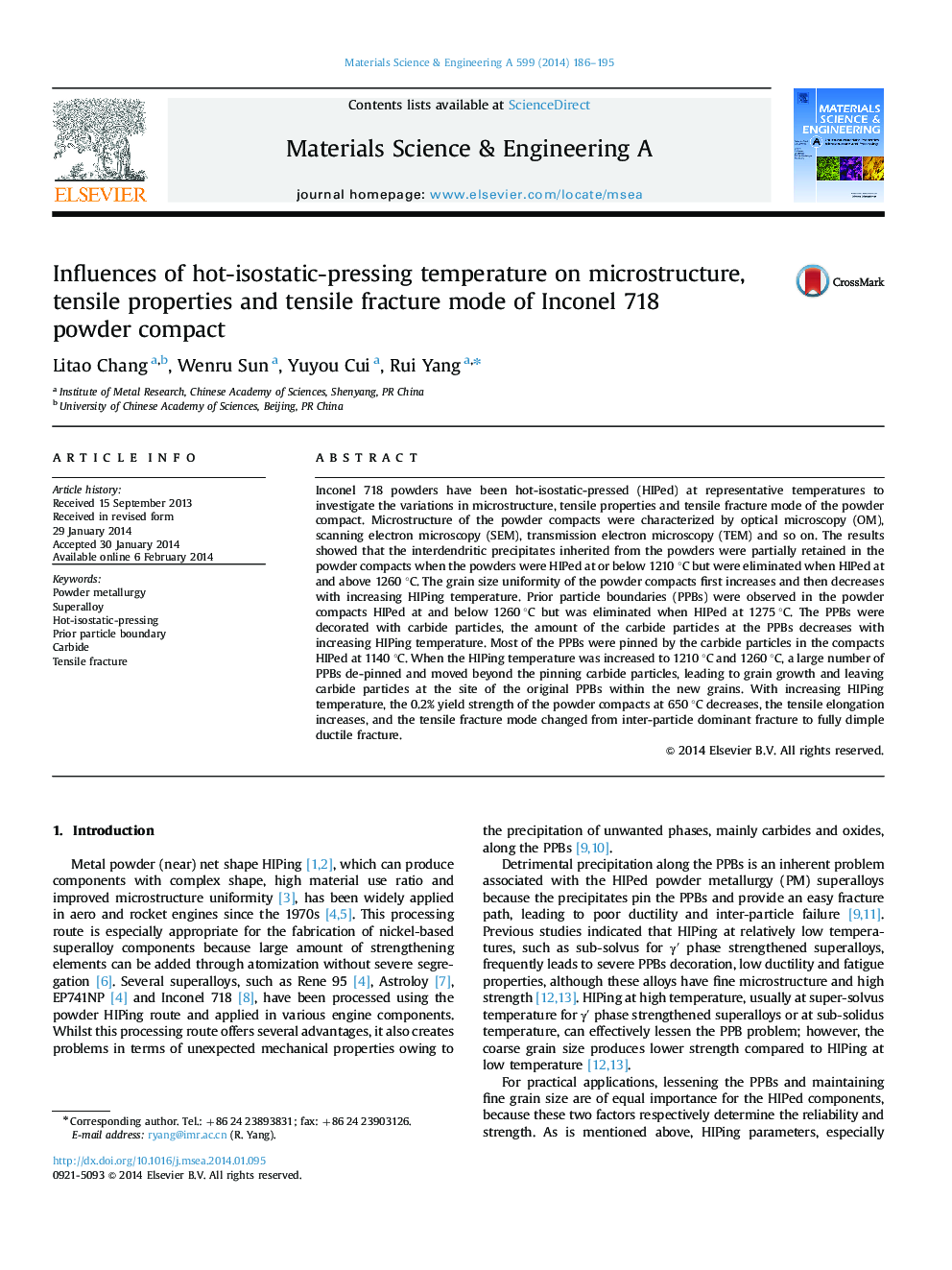| Article ID | Journal | Published Year | Pages | File Type |
|---|---|---|---|---|
| 1575411 | Materials Science and Engineering: A | 2014 | 10 Pages |
Abstract
Inconel 718 powders have been hot-isostatic-pressed (HIPed) at representative temperatures to investigate the variations in microstructure, tensile properties and tensile fracture mode of the powder compact. Microstructure of the powder compacts were characterized by optical microscopy (OM), scanning electron microscopy (SEM), transmission electron microscopy (TEM) and so on. The results showed that the interdendritic precipitates inherited from the powders were partially retained in the powder compacts when the powders were HIPed at or below 1210 °C but were eliminated when HIPed at and above 1260 °C. The grain size uniformity of the powder compacts first increases and then decreases with increasing HIPing temperature. Prior particle boundaries (PPBs) were observed in the powder compacts HIPed at and below 1260 °C but was eliminated when HIPed at 1275 °C. The PPBs were decorated with carbide particles, the amount of the carbide particles at the PPBs decreases with increasing HIPing temperature. Most of the PPBs were pinned by the carbide particles in the compacts HIPed at 1140 °C. When the HIPing temperature was increased to 1210 °C and 1260 °C, a large number of PPBs de-pinned and moved beyond the pinning carbide particles, leading to grain growth and leaving carbide particles at the site of the original PPBs within the new grains. With increasing HIPing temperature, the 0.2% yield strength of the powder compacts at 650 °C decreases, the tensile elongation increases, and the tensile fracture mode changed from inter-particle dominant fracture to fully dimple ductile fracture.
Related Topics
Physical Sciences and Engineering
Materials Science
Materials Science (General)
Authors
Litao Chang, Wenru Sun, Yuyou Cui, Rui Yang,
